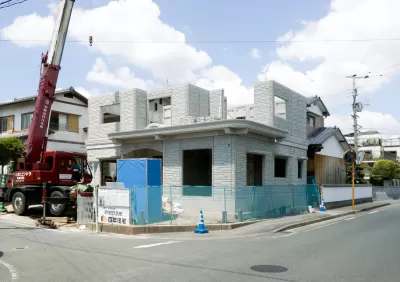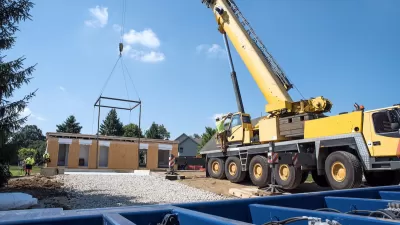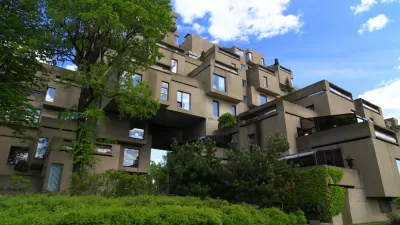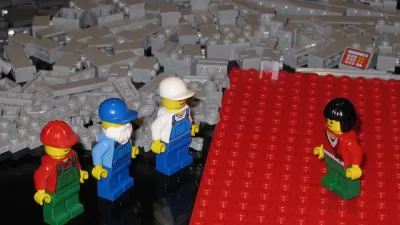When it comes to prefabricated housing, Japan is far ahead of the rest of the world. Will techniques from Japan's efficient modular home manufacturers inform a growing prefab industry in the United States?

Nate Berg takes a deep dive on Japan's unique prefab housing industry. "This approach to construction is becoming almost mainstream in many parts of the world—from Sweden to Germany to Australia. But the world leader in prefabricated housing is undoubtedly Japan. More than 15 percent of the nearly 1 million new homes and apartments built there last year were made inside factories [...]"
In the United States, on the other hand, only about 2 percent of single family homes constructed each year are modular. But that may change. "With advanced robotics, automation, and digital building information technologies—and increasing concern nationwide about the affordability of urban housing—factory-built housing once again seems poised for wider adoption."
Berg discusses the postwar origins of Japan's modular homes, how they've evolved, and how Japanese firms mass-produce housing components on the factory floor. "Typical prefab homes in Japan cost usually in the $300,000s, comparable to conventionally built houses."
While there are some notable prefab projects in the works here in the U.S., like Brooklyn's 461 Dean, "prefab or partially pre-built homes may make their strongest inroads into the current U.S. housing market as a solution to non-conventional housing needs," including housing the homeless or rebuilding after natural disaster.
FULL STORY: Preparing for our prefab future

Planetizen Federal Action Tracker
A weekly monitor of how Trump’s orders and actions are impacting planners and planning in America.

San Francisco's School District Spent $105M To Build Affordable Housing for Teachers — And That's Just the Beginning
SFUSD joins a growing list of school districts using their land holdings to address housing affordability challenges faced by their own employees.

The Tiny, Adorable $7,000 Car Turning Japan Onto EVs
The single seat Mibot charges from a regular plug as quickly as an iPad, and is about half the price of an average EV.

Seattle's Plan for Adopting Driverless Cars
Equity, safety, accessibility and affordability are front of mind as the city prepares for robotaxis and other autonomous vehicles.

As Trump Phases Out FEMA, Is It Time to Flee the Floodplains?
With less federal funding available for disaster relief efforts, the need to relocate at-risk communities is more urgent than ever.

With Protected Lanes, 460% More People Commute by Bike
For those needing more ammo, more data proving what we already knew is here.
Urban Design for Planners 1: Software Tools
This six-course series explores essential urban design concepts using open source software and equips planners with the tools they need to participate fully in the urban design process.
Planning for Universal Design
Learn the tools for implementing Universal Design in planning regulations.
Smith Gee Studio
City of Charlotte
City of Camden Redevelopment Agency
City of Astoria
Transportation Research & Education Center (TREC) at Portland State University
US High Speed Rail Association
City of Camden Redevelopment Agency
Municipality of Princeton (NJ)





























